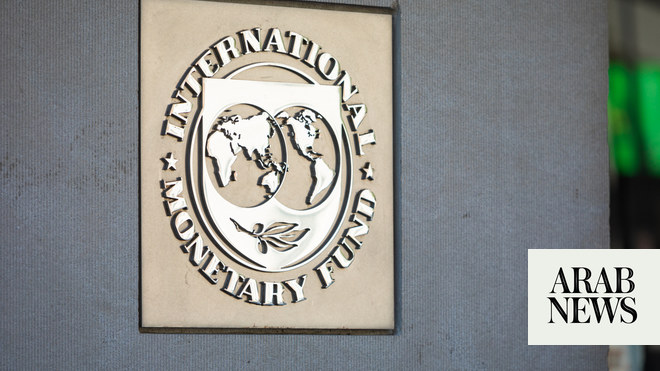
RIYADH: Global electricity demand is expected to rise by around 4 percent this year, up from 2.5 percent in 2023, driven by robust economic growth, according to an analysis.
In its latest report, the International Energy Agency highlighted that intense heatwaves and the growing adoption of electricity-powered technologies, such as electric vehicles and heat pumps, are driving the increase in global electricity demand.
Many regions experienced severe heatwaves in the first half of 2024, which heightened electricity needs and strained power grids. May was the hottest month of the year, marking the 12th consecutive month of record-high temperatures.
India, Mexico, Pakistan, the US, Vietnam, and several other countries experienced severe heatwaves in the first half of the year, leading to surging peak loads due to increased cooling needs.
“Growth in global electricity demand this year and next is set to be among the fastest in the past two decades, highlighting the growing role of electricity in our economies as well as the impacts of severe heatwaves,” said Keisuke Sadamori, director of Energy Markets and Security at IEA.
The energy agency added that more households, especially in emerging economies, have started to purchase air conditioners, further driving electricity demand in these regions.
The IEA also emphasized that adopting higher efficiency standards for air conditioning is crucial to mitigate the impact of increased cooling demand on power systems.
The report also highlighted that expanding and reinforcing power grids is essential for ensuring a reliable electricity supply.
The IEA noted that renewables are rapidly advancing globally, with solar photovoltaic set to achieve new records.
India and China to drive growth
The energy think tank further noted that this rise in electricity demand growth will be driven by countries like India, China, and the US.
“We expect this demand trend to continue in 2025, with growth also at 4 percent. In both 2024 and 2025, the rise in the world’s electricity use is projected to be significantly higher than global GDP (gross domestic product) growth of 3.2 percent. In 2022 and 2023, electricity demand grew more slowly than GDP,” the IEA added.
According to the analysis, electricity demand in China is forecast to increase by 6.5 percent in 2024, similar to its average rate between 2016 and 2019.
India will witness an 8 percent rise in electricity consumption in 2024, matching its rapid growth in 2023.
“In the first half of 2024, the country (India) grappled with heatwaves of record duration, with peak load reaching a new high and putting exceptional strains on power systems. Assuming a return to average weather conditions, we expect electricity demand growth in India to ease moderately to 6.8 percent in 2025,” the IEA added.
The report further highlighted that electricity demand in the US is set to rebound significantly in 2024, increasing by 3 percent year-on-year, driven by a positive economic outlook and the rising need for air conditioning amid severe heatwaves.
In the EU, demand is expected to increase by 1.7 percent as economic difficulties ease, but uncertainty over the pace of growth remains.
“EU electricity consumption had contracted over the two previous years, with the decline in output from energy-intensive industries an important driver. Signs of a recovery in EU electricity demand emerged starting in the fourth quarter of 2023,” said the IEA.
It added: “Growth gained further traction during the first half of 2024 as energy prices stabilized and various industries that had previously curtailed operations restarted.”
Clean energy sources
According to the analysis, despite a sharp rise in power consumption, solar PV alone is expected to meet roughly half of the growth in global electricity demand by 2025.
IEA further noted that global electricity generation from solar PV and wind is expected to surpass that from hydropower in 2024.
“The global energy transition is set to achieve another significant milestone by 2025, with total renewable generation poised to overtake coal-fired electricity output. The share of renewables in global electricity supply rose to 30 percent in 2023 and is projected to climb further to 35 percent in 2025,” said the IEA.
Despite the sharp increases in renewables, global power generation from coal is unlikely to decline this year due to the strong growth in demand, especially in China and India.
The study highlighted that carbon dioxide emissions from the global power sector are plateauing, with a slight increase in 2024 followed by a decline in 2025.
“It’s encouraging to see clean energy’s share of the electricity mix continuing to rise, but this needs to happen at a much faster rate to meet international energy and climate goals,” said Sadamori.
He added: “At the same time, it’s crucial to expand and reinforce grids to provide citizens with secure and reliable electricity supply – and to implement higher energy efficiency standards to reduce the impacts of increased cooling demand on power systems.”
Meanwhile, Fatih Birol, IEA’s executive director, said that the energy industry should urgently reduce its carbon emissions if the world wants to avoid catastrophic climate change in the coming decades, according to a press statement.
“About 80 percent of emissions that cause climate change come from fossil fuels. This is the reason there is a need to reduce emissions if we want a planet in the future that is like it is today,” Birol told the Al-Attiyah Foundation in a podcast interview.
He added: ‘This doesn’t mean that tomorrow we will not need fossil fuels, but the share of fossil fuels needs to decline. If we don’t, we will face catastrophic implications like floods, heat waves, and other extreme weather events. Continuing with the current fossil fuel-based energy system is not good news for anybody— producers and consumers alike.”
In the latest report, the IEA also projected that global nuclear generation is on track to reach a new high in 2025, surpassing its previous record in 2021.
According to the energy agency, nuclear generation is forecast to rise globally by 1.6 percent in 2024 and by 3.5 percent in 2025, driven by a steady increase in output by the French nuclear power fleet as maintenance works are completed.
The restarting of reactors in Japan and the arrival of new reactors in various markets, including China, India, Korea, and Europe, support the growth in nuclear power generation globally.
The report also noted that the rise of artificial intelligence has put the electricity consumption of data centers in focus, making better stocktaking more important than ever.
“In many regions, historical estimates of data centers’ electricity consumption are hampered by a lack of reliable data. At the same time, future projections include a very wide range of uncertainties related to the pace of deployment, the diverse and expanding applications of AI, and the potential for energy efficiency improvements,” said the IEA.
It added: “Expanding and improving the collection of electricity demand data from the sector will be crucial to identify past developments correctly and to understand future trends better.”












